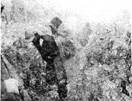
 GENEVA,Feb. 11(Xinhua)-The current La Nina weather phenomenon may just be a partial cause of south China’s freeze-up at the start of 2008, said the United Nations World Meteorological Organization (WMO)Monday.
GENEVA,Feb. 11(Xinhua)-The current La Nina weather phenomenon may just be a partial cause of south China’s freeze-up at the start of 2008, said the United Nations World Meteorological Organization (WMO)Monday.
The latest La Nina pattern, which began in the third quarter of 2007, has picked up strength in the past three months, with sea surface temperatures now about 1.5to 2 degrees Celsius(摄氏度)colder than average over large parts of the eastern and central equatorial Pacific Ocean, said the latest report issued by the WNO.
Presenting the Geneva-based body’s report, Rupa Kumar Killi, a WMO climate expert, said the recent month-long snow and ice-storms in
However, he said
He also said the present La Nina cycle may last at least until mid-2008 and it is also possible, if less likely, that the cycle could stretch into the third quarter.
La Nina is a large pool of unusually cold water in the equatorial Pacific that develops every few years and influences global weather. It is the climatic opposite of El Nino, a warming of the Pacific, and both have been associated with extreme weather around the globe.
Since Jan.10, snow, sleet and low temperatures have swept
56. What partially caused south
A. La Nina B. El Nino C. Typhoon D. Frost
57. When did the latest La Nina weather phenomenon begin?
A. In the spring of 2007 B. In the summer of 2007
C. In the fall of 2007 D. In the winter of 2007
58. Which of the following statements is NOT true according to the passage?
A. Due to the La Nina, sea surface temperatures become colder over the eastern Pacific Ocean
B. The La Nina phenomenon is the climatic opposite of El Nino
C. There were several causes which brought about
D. The present La Nina cycle may last until spring in 2008 and disappear
59. What can we learn from the sixth paragraph?
A. La Nina does not happen every year but it influences global weather
B. La Nina happens every year and influences global weather
C. La Nina happens every year but seldom influences global weather
D. La Nina happens every few years and brings about warm and wet weather
60. What is the best title of the passage?
A. La Nina may be partial cause of S China’s freeze-up
B. La Nina and El Nino
C. What cause the La Nina weather phenomenon
D. How La Nina destroys the whole world’s weather
科目:高中英语 来源: 题型:阅读理解
GENEVA, Feb.11 (Xinhua) ―The current La Nina weather phenomenon may just be a partial cause of south
The latest La Nina pattern, which began in the third quarter of 2007, has picked up strength in the past three months, with sea surface temperatures now about 1. 5 to 2 degrees Celsius(摄氏度)colder than average over large parts of the eastern and central equatorial Pacific Ocean, said the latest report issued by the WMO.
Presenting the Geneva-based body’s report, Rupa Kumar Killi, a WMO climate expert, said the recent month-long snow and ice-storms in China’s central, southern and eastern regions could be connected with the La Nina phenomenon, the climatic opposite of El Nino(厄尔尼诺现象).
However, he said
He also said the present La Nina cycle may last at least until mid-2008 and it is also possible, if less likely, that the cycle could stretch into the third quarter.
La Nina is a large pool of unusually cold water in the equatorial Pacific that develops every few years and influences global weather. It is the climatic opposite of El Nino, a warming of the Pacific, and both have been associated with extreme weather around the globe.
Since Jan. 10, snow, sleet and low temperatures have swept
51. What partially caused south
A. La Nina. B. El Nino. C. Typhoon. D. Frost.
52.When did the latest La Nina weather phenomenon begin?
A. In the spring of 2007. B. In the summer of 2007.
C. In the fall of 2007. D. In the winter of 2007.
53. Which of the following statements is NOT true according to the passage?
A. Due to the La Nina, sea surface temperatures become colder over the eastern Pacific Ocean.
B. The La Nina phenomenon is the climatic opposite of El Nino.
C. There were several causes which brought about
D. The present La Nina cycle may last until spring in 2008 and disappear.
54. What can we learn from the sixth paragraph?
A. La Nina does not happen every year but it influences global weather.
B. La Nina happens every year and influences global weather.
C. La Nina happens every year but seldom influences global weather.
D. La Nina happens every few years and brings about warm and wet weather.
55. What is the best title of the passage?
A. La Nina May Be a Partial Cause of
B. La Nina and El Nino.
C. What Causes the La Nina Weather Phenomenon?
D. How La Nina Destroys the Whole World’s Weather?
查看答案和解析>>
湖北省互联网违法和不良信息举报平台 | 网上有害信息举报专区 | 电信诈骗举报专区 | 涉历史虚无主义有害信息举报专区 | 涉企侵权举报专区
违法和不良信息举报电话:027-86699610 举报邮箱:58377363@163.com